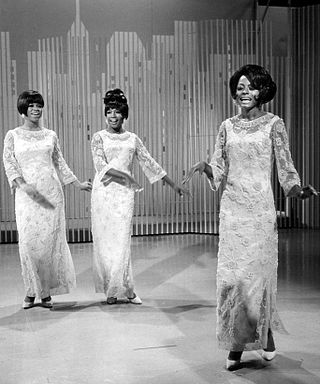
The Supremes were an American girl group and a premier act of Motown Records during the 1960s. Founded as the Primettes in Detroit, Michigan, in 1959, the Supremes were the most commercially successful of Motown's acts and the most successful American vocal band, with 12 number-one singles on the Billboard Hot 100. Most of these hits were written and produced by Motown's main songwriting and production team, Holland–Dozier–Holland. It is said that their breakthrough made it possible for future African-American R&B and soul musicians to find mainstream success. Billboard ranked the Supremes as the 16th greatest Hot 100 artist of all time.
Motown is an American record label owned by the Universal Music Group. It was founded by Berry Gordy Jr. as Tamla Records on January 12, 1959, and incorporated as Motown Record Corporation on April 14, 1960. Its name, a portmanteau of motor and town, has become a nickname for Detroit, where the label was originally headquartered.
Golden World Records was a record label owned by Eddie Wingate and Joanne Bratton. The recording studio was located in Detroit, Michigan, United States. The studio's national hits included "Oh How Happy" by Shades of Blue and "(Just Like) Romeo and Juliet" by The Reflections. The early, pre-Motown songs of Edwin Starr, such as "Agent Double-O-Soul", were recorded at the Golden World studio.

Berry Gordy III known professionally as Berry Gordy Jr., is an American retired record executive, record producer, songwriter, film producer and television producer. He is best known as the founder of the Motown record label and its subsidiaries, which was the highest-earning African-American business for decades.
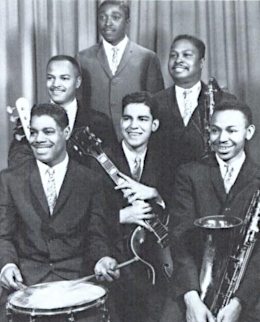
The Funk Brothers were a group of Detroit-based session musicians who performed the backing to most Motown recordings from 1959 until the company moved to Los Angeles in 1972.

Let's Get It On is the thirteenth studio album by the American soul singer, songwriter, and producer Marvin Gaye. It was released on August 28, 1973, by the Motown subsidiary label Tamla Records on LP.
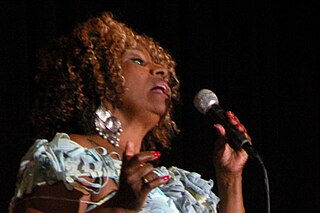
Brenda Holloway is an American soul singer who was a recording artist for Motown Records during the 1960s. Her best-known recordings are the hits "Every Little Bit Hurts", "When I'm Gone", and "You've Made Me So Very Happy". The latter, which she co-wrote, was later widely popularized when it became a Top Ten hit for Blood, Sweat & Tears. She left Motown after four years, at the age of 22, and largely retired from the music industry until the 1990s, after her recordings had become popular on the British "Northern soul" scene.
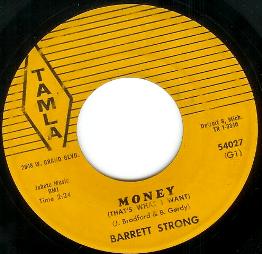
"Money (That's What I Want)" is a rhythm and blues song written by Tamla founder Berry Gordy and Janie Bradford, which was the first hit record for Gordy's Motown enterprise. Barrett Strong recorded it in 1959 as a single for the Tamla label, distributed nationally on Anna Records. Many artists later recorded the tune, including the Beatles in 1963 and the Flying Lizards in 1979.
Mable John was an American blues vocalist and was the first female artist signed by Berry Gordy to Motown's Tamla label.

Joseph Lucian Messina was an American guitarist. Dubbed the "white brother with soul", he was one of the most prolific guitarists in Motown Records' in-house studio band, the Funk Brothers.

Marvin Earl Johnson was an American R&B singer, songwriter and pianist. He was influential in the development of the Motown style of music, primarily for the song "Come to Me," which was the first record issued by Tamla Records, the precursor to the famous label.
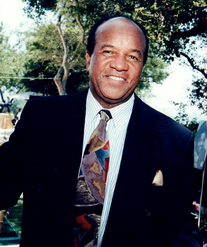
Robert Louis Gordy was an American songwriter, music publishing executive, and recording artist under the stage name Bob Kayli. He released the minor hit song "Everyone Was There" in 1958. He was the brother of Motown founder Berry Gordy Jr. and uncle of Redfoo.
"Let Your Conscience Be Your Guide" is the debuting single for singer Marvin Gaye, released as Tamla 54041, in May 1961. It was also the first release off Gaye's debut album, The Soulful Moods of Marvin Gaye, in which most of the material was the singer's failed attempt at making an 'adult' record compared to Motown's younger R&B sound.
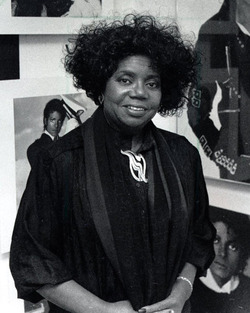
Esther Gordy Edwards was a staff member and associate of her younger brother Berry Gordy's Motown label during the 1960s. Edwards created the Motown Museum, Hitsville U.S.A., by preserving the label's Detroit studio. She also served as president of the Motown Museum and has been called the "Mother of Motown". Edwards was posthumously inducted into the Michigan Women's Hall of Fame in 2022.
The Gordys are an African-American family of businesspeople and music industry executives. They were born to Georgia-reared parents Berry "Pops" Gordy Sr. and Bertha Gordy and raised in Detroit, where most of the siblings played a pivotal role in the international acceptance of rhythm and blues music as a crossover phenomenon in the 1960s. The accomplishment is attributable to the creation of Motown, a company founded by the seventh-oldest sibling, Berry Gordy Jr..
Reba Jeanette Smith, known professionally as Debbie Dean, Penny Smith, and Debbie Stevens, was an American singer who was the first white solo artist to record for Motown.

Hitsville USA: The Motown Singles Collection 1959–1971 is a 1992 four-CD collection of Motown hits, during Motown's golden age when the songs were recorded at its original Detroit studio. The selections on this compilation were transferred from the original single mixes, which were mixed for AM radio play and 45 RPM singles. Therefore, the tracks are mono. It was followed a year later by the release of Hitsville USA: The Motown Singles Collection Volume 2 1972–1992.
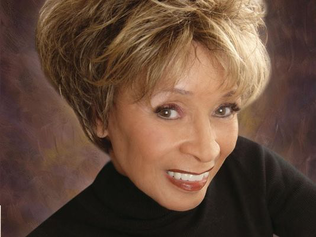
Raynoma Mayberry Liles Gordy Singleton was an American R&B producer, songwriter, and vocalist perhaps best known for her association with ex-husband, Berry Gordy during the early days of Motown when she was often known as Miss Ray.
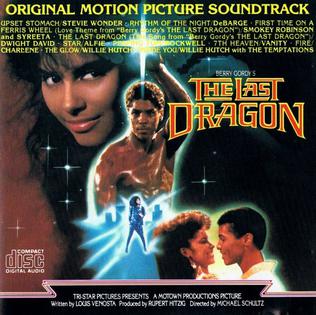
The Last Dragon: Original Soundtrack Album is a soundtrack album for the 1985 movie The Last Dragon starring Taimak, Julius Carry, Vanity and Christopher Murney. The music soundtrack album was supervised by executive producer Berry Gordy, the founder of Motown Records.
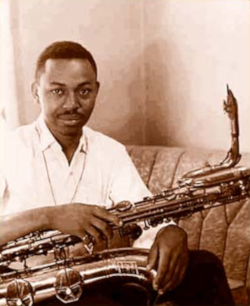
Andrew Alexander "Mike" Terry was an American saxophonist, songwriter, arranger, producer and musical director. His baritone sax solos feature on the breakthrough hits of Martha and the Vandellas, and The Supremes. As a member of the Funk Brothers he performed on thousands of Motown recordings from 1960 to 1967, including at least seven US #1 hits. As was Motown's policy at the time, none of the studio musicians were credited by name. Terry was the musical arranger of the 1966 hit "Cool Jerk" by The Capitols, and later became a record producer, with partners including George Clinton, Sidney Barnes, and Jack Ashford.



















